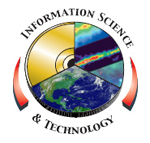
Please Note: The content on this page is not maintained after the colloquium event is completed. As such, some links may no longer be functional.
Hans Mark
Tales of Scientific Computation at Ames and in NASA
Wednesday, March 18, 2009
Building 3 Auditorium - 11:00 AM
(Coffee at 10:30 AM)
This is a personal story about how high performance computing was developed at the NASA-Ames research center and elsewhere in NASA. There were people at Ames who were first class aerodynamic scientists and who could use computers. Thus, it was decided that some procurement short cuts were justified. We acquired computers in three quantum steps. First, in 1969, there was an IBM duplex 360/67 which was captured by a "midnight supply operation" from the Air Force. Next, in 1972, was the ILLIAC IV at the University of Illinois which became available because of an act of domestic terrorism and financial help from DARPA. Finally in 1975, there was one of Seymour Cray's CDC 7600s also from an Air Force source. In 1981, by which time Seymour Cray had his own company, a Cray 1S appeared at Ames, followed in 1984 by CDC Cyber 205 and a Cray X-MP/22. The last named machines were made available because of shameless earmarking by NASA Headquarters. However, confession being good for the soul, Goddard also benefitted from the earmarking with a twenty million dollar fund to develop a truly massively parallel computer delivered in 1984.
Hans Mark is a Professor of Aerospace Engineering and Engineering Mechanics at The University of Texas at Austin, a post he has held since 1988. Since 1992, he also holds the John J. McKetta Centennial Energy Chair in Engineering. Since 1990, he has been associated with The University's Institute for Advanced Technology as a Senior Research Engineer. In that capacity he works on advanced weapons systems for the U.S. Army.
Dr. Mark was named Chancellor of The University of Texas System on September 1, 1984 and served until September 1, 1992
Prior to joining The University in September 1984, Dr. Mark was the Deputy Administrator of NASA having been appointed to that position by President Reagan in March 1981. During his term of service he oversaw the first fourteen space shuttle flights and helped to initiate the U.S. Space Station Program. Dr. Mark moved to Washington in April 1977 when he was appointed Undersecretary of the Air Force and director of the National Reconnaissance Office by President Jimmy Carter. In the latter post, he was responsible for managing the U.S. satellite reconnaissance program. In April 1979, President Carter named Dr. Mark Secretary of the Air Force, a post he held until February 1981.
Before moving to Washington, Dr. Mark was the director of the NASA-Ames Research Center in Mountain View, California for eight years (1969-1977).
From 1955 to 1969, Dr. Mark was associated with the University of California at Berkeley and at Livermore, California. He served as a professor of nuclear engineering and department chairman at the University of California in Berkeley and as a research scientist and division leader at the University's Lawrence Livermore National Laboratory.
Born in Mannheim, Germany on June 17, 1929, Dr. Mark came to the United States with his parents in 1940 and became a U.S. citizen in 1945. He earned an A.B. degree in physics from the University of California in Berkeley in 1951 and a Ph.D. in physics from the Massachusetts Institute of Technology in 1954. From 1954 to 1955, he served as acting chief of the neutron physics group at MIT..
IS&T Colloquium Committee Host: James Fischer
